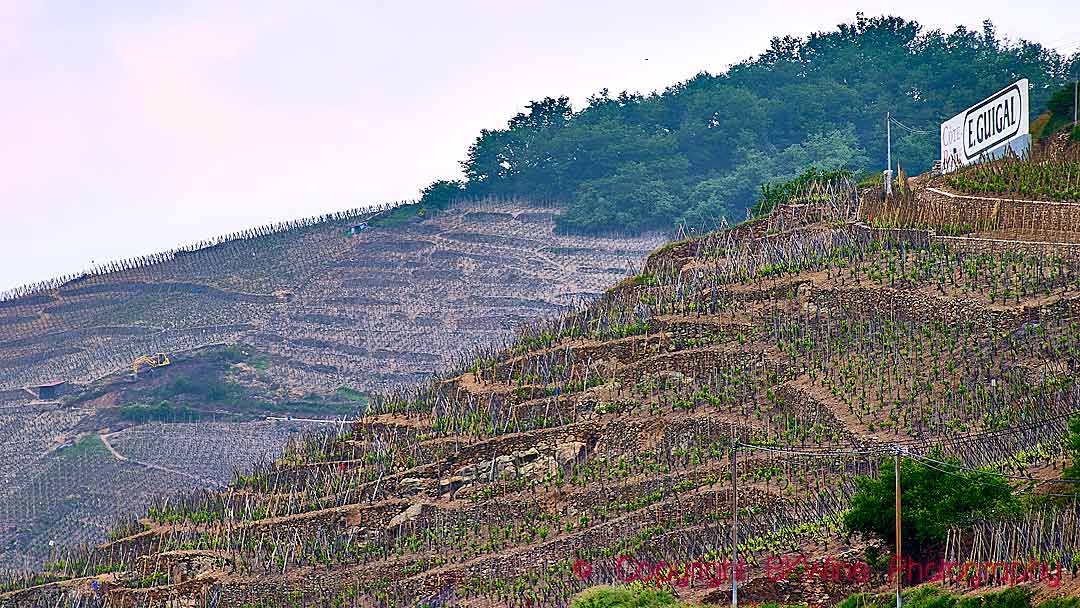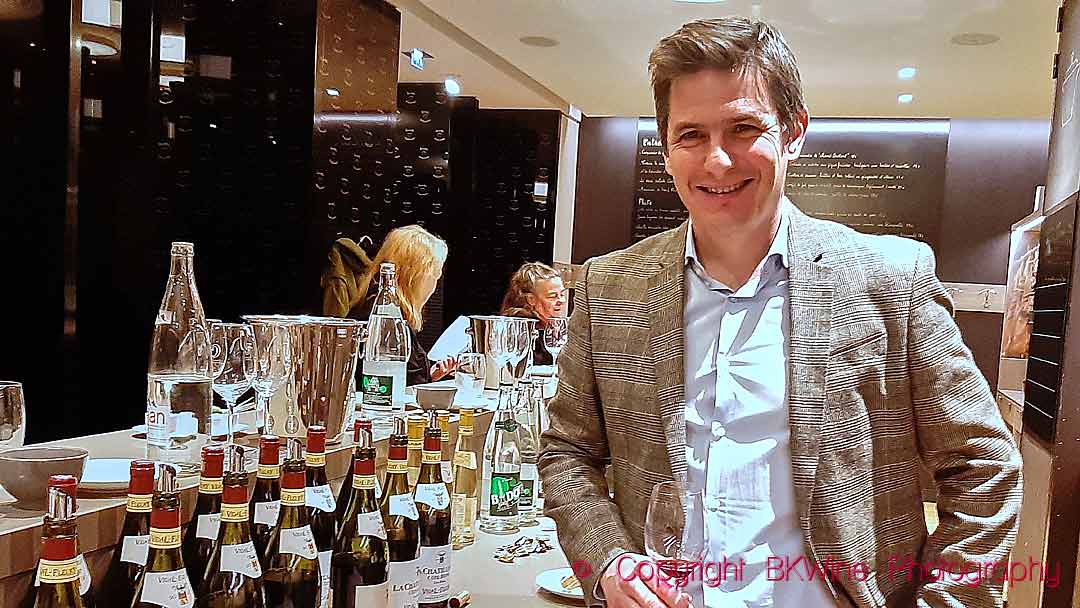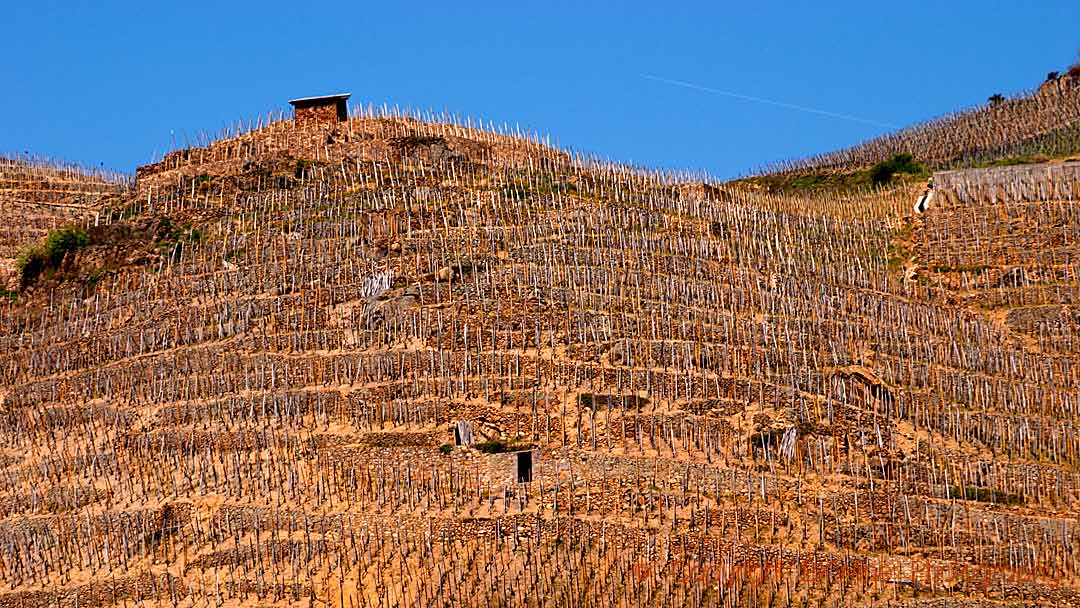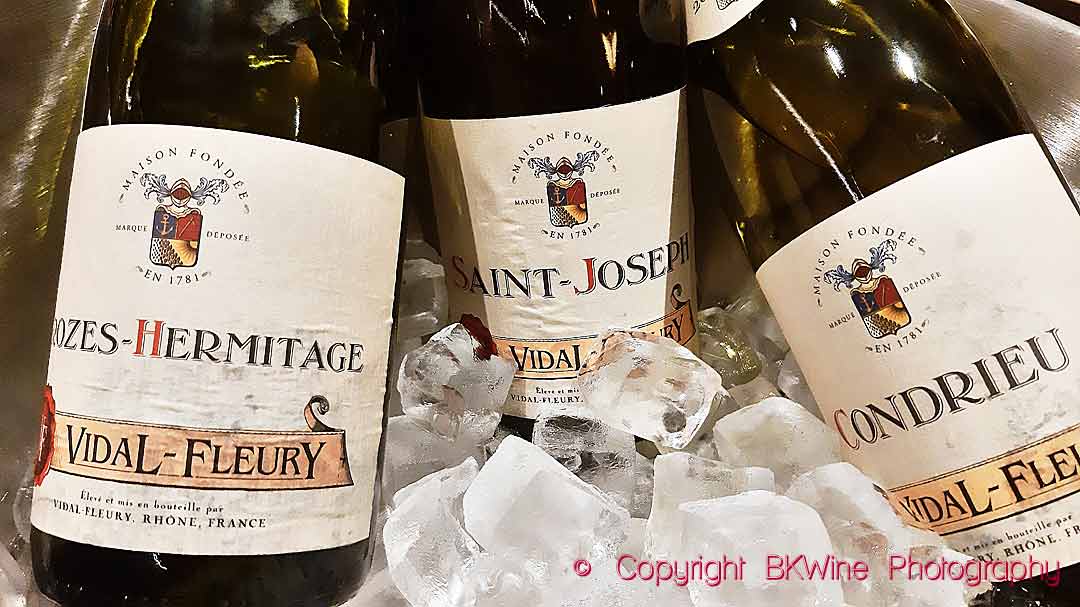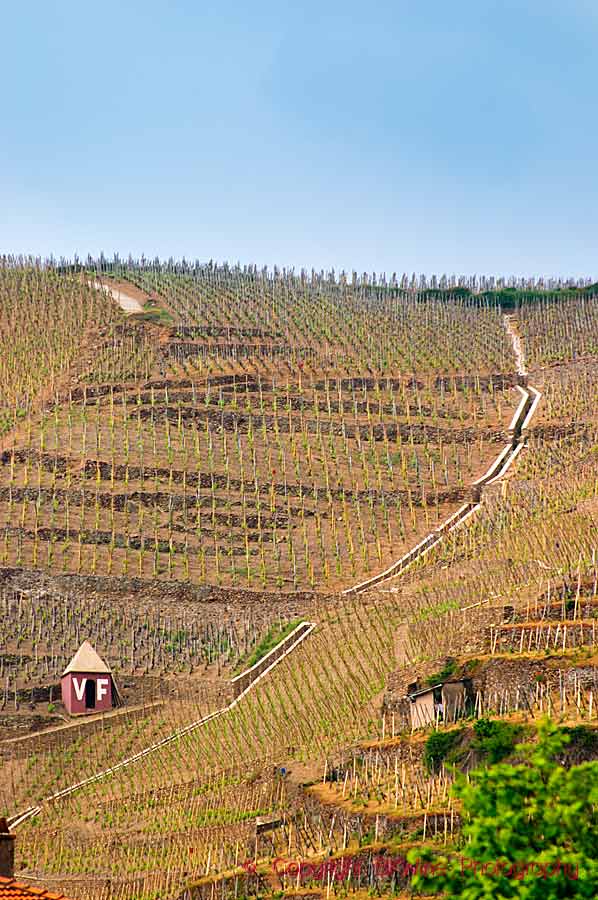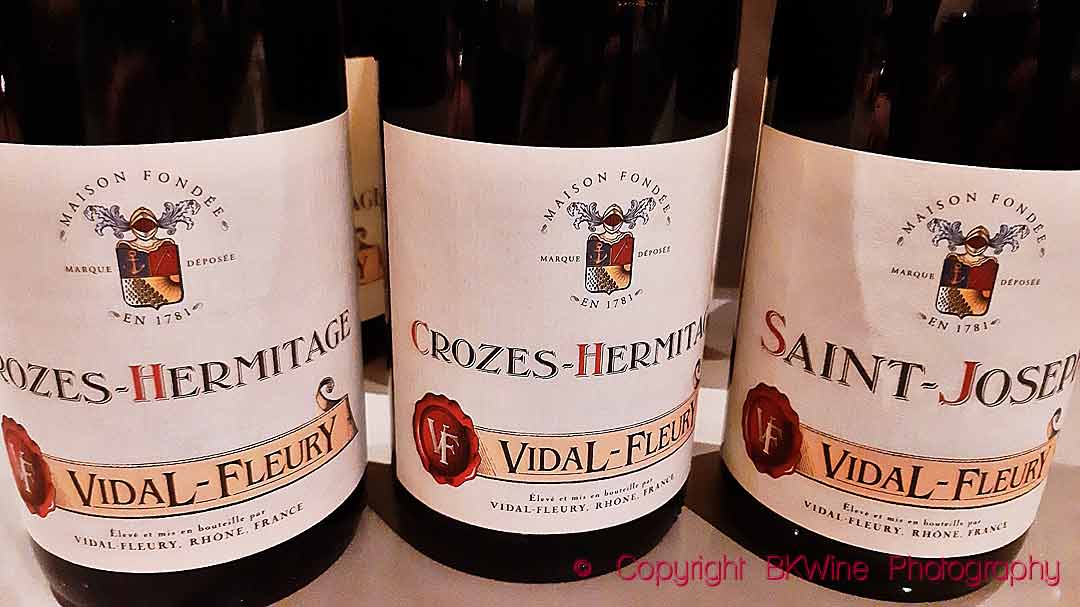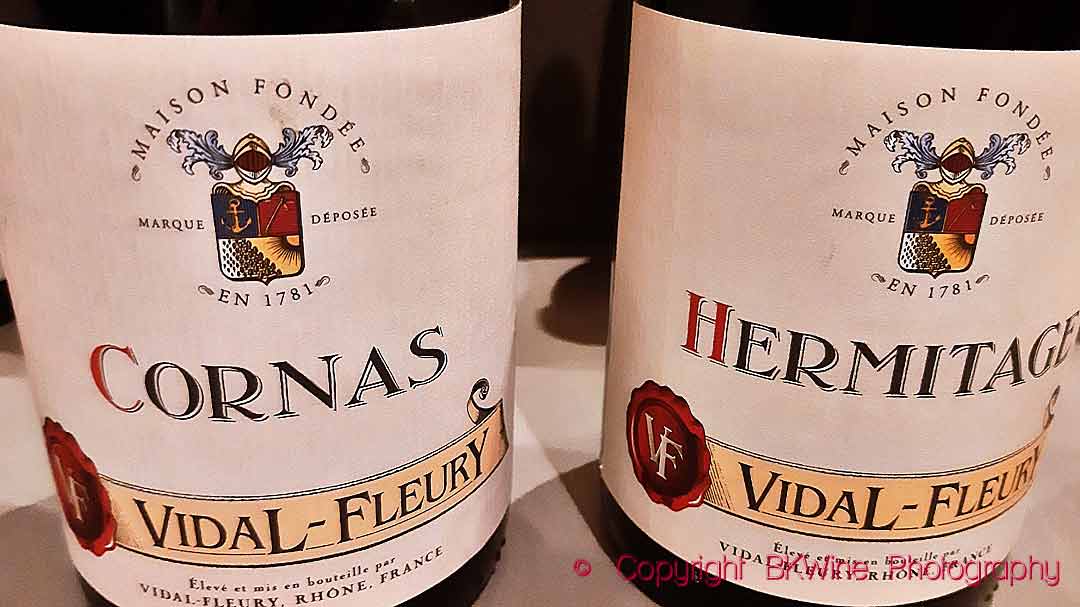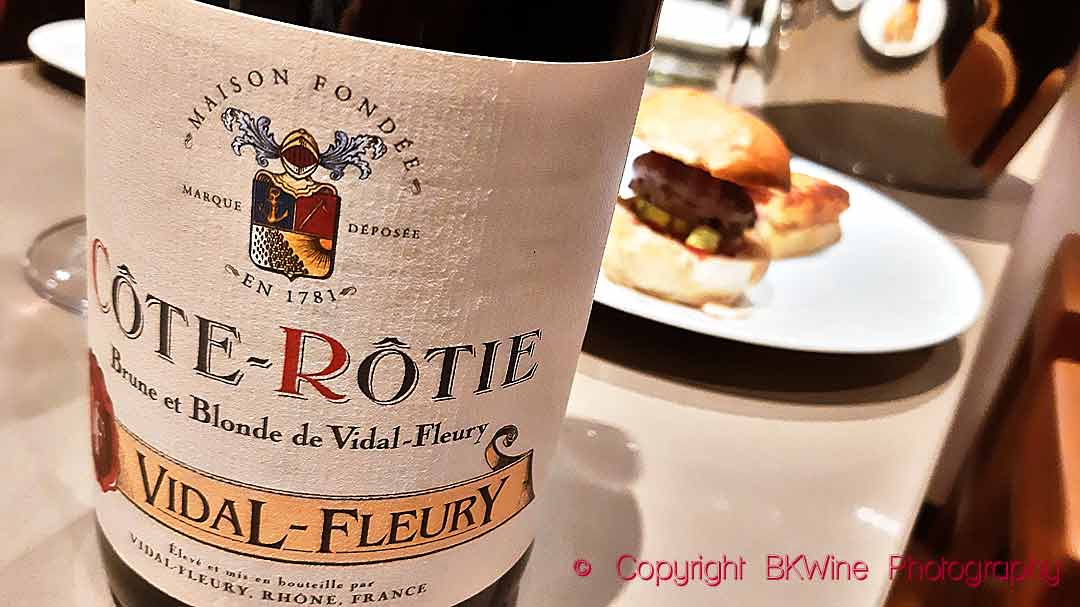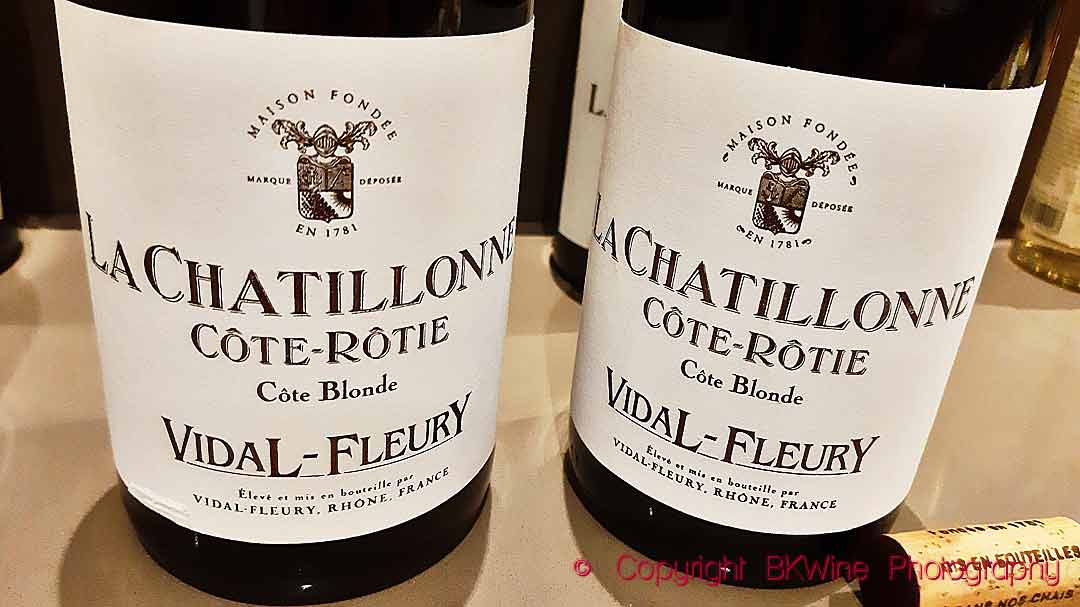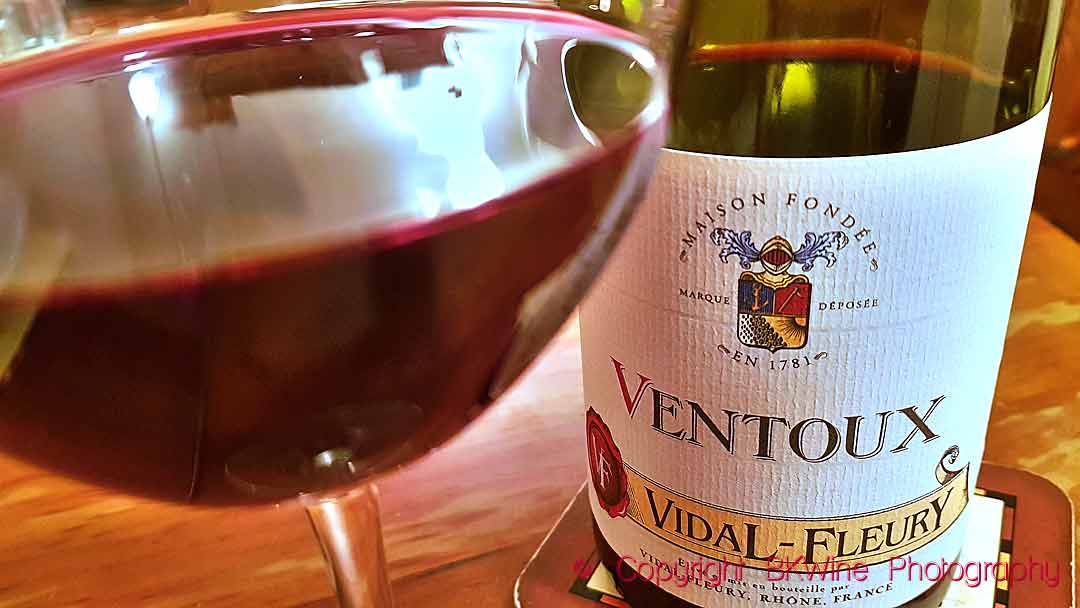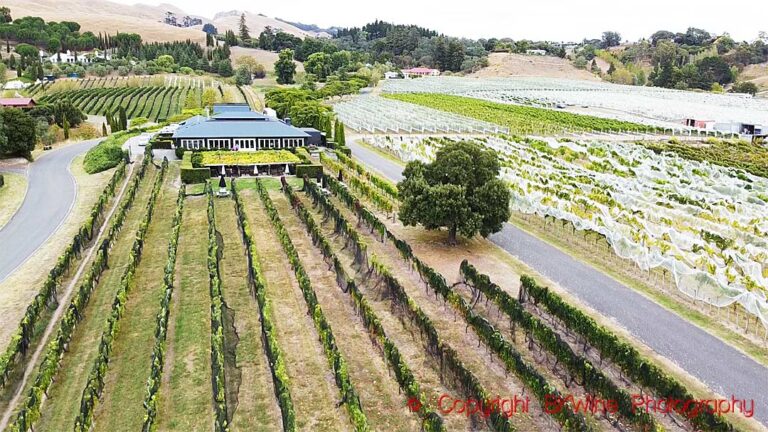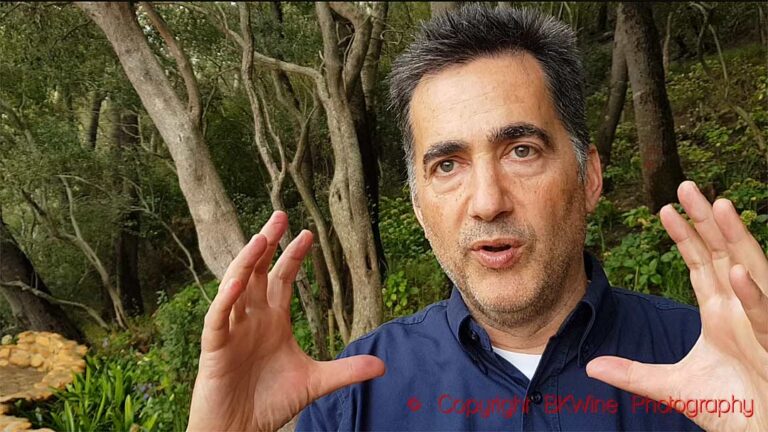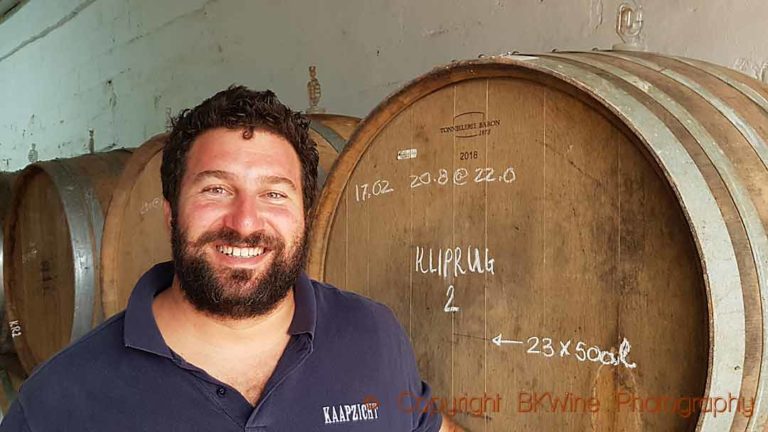The Rhône Valley is one of France’s great wine regions. The red wines dominate, but the white ones should not be ignored. There are many small growers in the Rhone region. But the Rhône Valley also has some bigger producers who have been influential in bringing Rhône Valley wines out into the world. We recently tasted a wide range of wines from one of them, Maison Vidal Fleury, the oldest house in the northern Rhône. We discussed the wines with Antoine Dupré, an oenologist and the general manager since January 2021. Read about the house and about the wines.
Vidal-Fleury is situated outside the small town of Ampuis in the northern Rhône valley. It was founded as early as 1781 by Joseph Vidal. The house is actually the oldest northern Rhône producer still in operation. A hundred years later, when Gustave Vidal married Miss Fleury at the end of the 19th century, the name was changed to Vidal-Fleury. The dowry allowed the couple to replant their vineyards after the ravages of the phylloxera.
This is a longer version of an article published on Forbes.com.
Vidal-Fleury began exporting their wines early. Thomas Jefferson visited the estate in 1787, six years after its founding, when he was ambassador to France. The USA quickly became an important customer and is today the house’s largest export market.
The Vidal-Fleury family no longer owns the house. There was no heir who wanted to take over when Joseph, the family’s patriarch, died in 1976 after 68 years at the helm. In 1984, the family sold to Guigal, the other famous house in Ampuis. It was a natural choice. The families had long worked closely together. In 1924, Joseph actually hired the young Etienne Guigal to work in the cellar. Guigal stayed for 15 years before moving away, founding his own successful eponymous house. For the Vidal-Fleury family, it was obvious that Guigal should take over.
However, Vidal-Fleury operates as an independent producer, within the Guigal group, with its own strong brand. A new, state-of-the-art winery was built in 2008. Over the years, production has increased and spread to the southern Rhône Valley. Vidal-Fleury now produces wines from around 20 appellations in northern and southern Rhône. Vidal Fleury produces approximately one million bottles.
Although Vidal-Fleury now makes wine from the entire Rhône valley, stretching more than 220 km from north to south, it is the northern part that is the heart and soul of the business. These wines have been made by Vidal-Fleury since the very start in 1781. These are made in small quantities – the northern Rhône is only 3,500 hectares of the entire valley’s more than 70,000 hectares – but the wines are much sought after.
Côte Rôtie (300 hectares), Condrieu (200 ha), Hermitage (130 ha) and Cornas (150 ha) are small and exclusive appellations. Saint Joseph and Crozes-Hermitage are big by comparison, 1200 and 1500 hectares respectively. Overall, harvest yields are low, rarely over 40 hectolitres per hectare.
In summary, Vidal-Fleury offers an excellent and fairly complete range of wines from the Rhône Valley.
I asked what plans Antoine Dupré has for the future? When it comes to the taste of the wines, he talks a lot about elegance. He wants an elegant fruit, a crunchiness, a good balance between fruit and oak ageing and less marked tannins. He talks about a more modern style with more careful extraction. “Syrah is already powerful enough,” he says.
He also talks about le milieu de bouche, i.e. how the wine feels in the mouth after the initial “attack” and how important it is for the quality of the wine. “It’s the difference between a good and a simple wine,” he says. The wine must be felt all the way, so to speak, from the first sensation to the aftertaste. One way to improve le milieu de bouche is, he says, to raise the temperature at the end of the fermentation to 30-35 degrees C.
He also wants to develop exports to countries outside Europe where they are currently not so much represented, such as China, Russia and Brazil, but also breathe new life into the French sales force.
White wines Northern Rhône Valley
All prices stated are for purchases on-site at the Vidal-Fleury winery shop. In retail, the prices may be higher.
Three white grapes used in the northern Rhône are viognier, marsanne and roussanne. Viognier is used for Condrieu, and the other two are blended or used as a single variety for the white Hermitage, white Crozes-Hermitage, white Saint Joseph and Saint Péray (which is always white, albeit sometimes sparkling). The whites from the Northern Rhône are magnificent wines, rich, full-bodied and with a lovely mouthfeel.
Crozes-Hermitage blanc 2020, Vidal-Fleury
95%, marsanne 5% roussanne. Nuanced aromas of flowers, citrus and melon. It is very dry, quite complex and full-bodied. A classic year says Antoine Dupré and adds that he would like to see an increase in roussanne to accentuate freshness and finesse. (14.15 euros)
Saint Joseph blanc 2020, Vidal-Fleury
70% marsanne, 30% roussanne. Full-bodied, exceptional mouthfeel, definitely a structure wine, some honey in the finish. Fermentation in steel tank for marsanne and oak barrels for roussanne. Then both are aged in oak barrels, small and 600-litres. Malolactic fermentation for roussanne but not for marsanne. (18.20 euros)
Saint Péray 2020, Vidal-Fleury
This is Vidal-Fleury’s first vintage of Saint Péray, recently bottled. The grape is marsanne. A young, aromatic wine, excellent and fresh with a good mouthfeel and complexity. It was partially fermented in small oak barrels. In the future, the plans are to vinify it in 600-litre barrels for a better balance between oak and fruit, says Antoine. (~ 13 euros)
Condrieu 2019, Vidal-Fleury
Condrieu is south of Côte Rôtie, and the grape is viognier, known for its aromatic and floral character. Condrieu is one of France’s great white wines, mentioned in the same breath as Meursault and Montrachet. Viognier never, or at least rarely, gets any better than in Condrieu.
Here we have a full-bodied wine with an excellent mouthfeel. It is crispy and dry. The attractive aromas speak of nuts, flowers and apricots. The body is structured with a long taste, a slight saltiness in the aftertaste and a lovely refreshing fruit. (33 euros)
Red wines, northern Rhône valley
In the northern Rhône, syrah is the only red grape, and this is where it shows itself from its most typical side with the characteristics that are most often associated with the grape.
Crozes-Hermitage rouge 2019, Vidal-Fleury
Pleasant and quite unpretentious wine. I don’t mind drinking it young to enjoy the crunchy red fruit. Intensity in the aromas, clean fruit. (14.17 euros)
Crozes-Hermitage rouge 2020, Vidal-Fleury
Great syrah style with spiciness and generous dark fruit and a slight bitterness at the end. Typical of the appellation, says Antoine. The spiciness is precisely what he wants in a Crozes-Hermitage.
Saint Joseph Rouge 2018, Vidal-Fleury
Saint Joseph is a relatively large appellation that stretches from Condrieu down to the Cornas on the west side of the river. This wine comes from the northern part of the appellation. The tannins give good structure; there’s a fresh acidity combined with lovely fruit. A bit soft at the end. (16.20 euros)
Cornas 2018, Vidal-Fleury
This wine has an excellent syrah character with pepperiness, charcuterie and violets. Tasty and balanced despite its youth. Fresh finish. Antoine recommends serving it with duck breast or a rabbit pâté. (36.50 euros)
Côte Rôtie Brune & Blonde 2018, Vidal-Fleury
Syrah from the northern Rhône at its most typical. Long, complex taste with the grape’s distinctive features of tar, black pepper, violets. Pleasant, refreshing dark fruit, dense structure with tannin. The must is fermented with the natural yeast, and the fermentation temperature is kept at a warm temperature, 30 degrees C. Two years of ageing in oak barrels, small and large. (~40 euros)
The grapes grow here on neck-breaking steep slopes in granite soil. There are two main types of soil. The northern part is called Côte Brune and has a significant element of iron-rich mica shale. The southern part, Côte Blonde, consists of gneiss and clay-mixed clay. If you want, you are allowed to mix a small amount of viognier in your Côte Rôtie
Côte Rôtie Blonde La Chatillonne 2016, Vidal-Fleury
The jewel in the crown, the small vineyard of 0.8 hectares called La Chatillonne, produces 300 cases a year. Syrah and viognier (12%) are planted together in the vineyard. Fermentation in 228-litre new oak barrels. An elegant wine with smoothness, intensity and concentration, a bit oaky and a warm tobacco aroma. (84 euros)
Hermitage 2019, Vidal Fleury
Hermitage, a legendary wine with a long history. The Hermitage slope is dramatically steep and forms a spectacular backdrop to the small town of Tain l’Hermitage. The wine is known for its ageing potential. But syrah-lovers will enjoy it even after just a couple of years.
A tight structure with tannins but still very elegant, rich in dark fruit (black currants, plums…). Already balanced with significant concentration. (~ 36 euros)
Southern Rhône valley
Vidal Fleury also makes wines from Châteauneuf-du-Pape, Vacqueyras, Tavel, Cairanne, Côtes-du-Rhône Villages, Ventoux and Muscat de Beaumes-de-Venise. Here is a small selection of these wines from the southern Rhône valley. As is often the case in the southern Rhône, the wines are both full of flavour and affordable.
Côtes du Rhône blanc 2020, Vidal-Fleury
Delicious wine with intense floral aromas and yellow peaches, made with viognier and grenache blanc. Quite full-bodied and with a fresh finish. ~ 11 euros
Côtes du Rhône rouge 2018, Vidal-Fleury
Made mostly with grenache and a bit of syrah, mourvèdre and carignan. Pleasant, well-made wine with red berries, cherries and a taste of fresh herbs typical of the appellation. ~ 10 euros
Gigondas 2018, Vidal Fleury
Powerful grenache wine, quite dark in colour and with generous fruit and black pepper. Pleasant and easy to drink but still structured. ~ 16 euros
Travel
The Rhône Valley is a very beautiful region in southern France. The south is typically charming Provençal. You can discover the wines and the gastronomy on a wine tour in the Rhone Valley with BKWine.
Travel to the world’s wine regions with the wine experts and the wine travel specialist.
Beautiful wine tours. BKWine wine tours.



